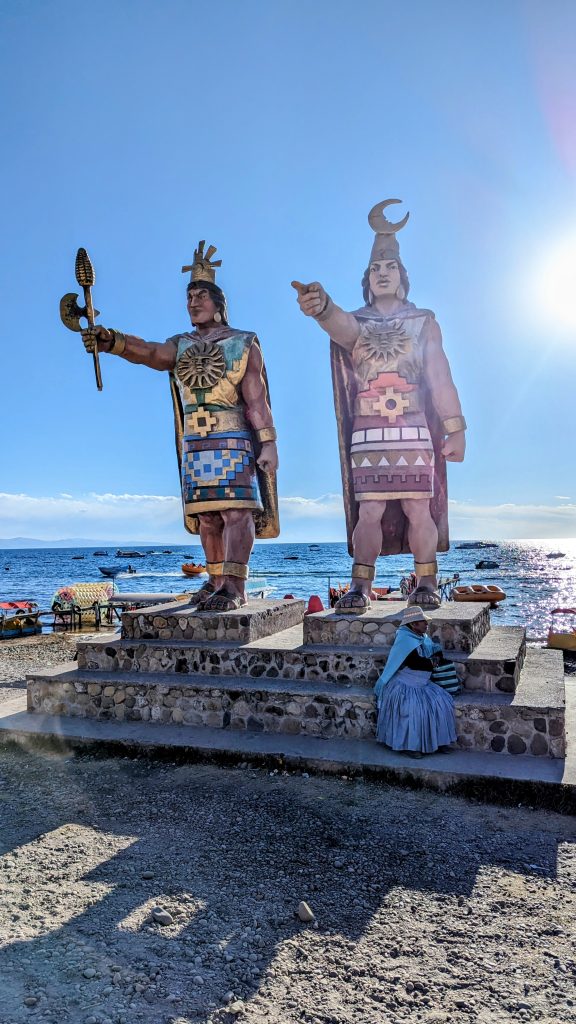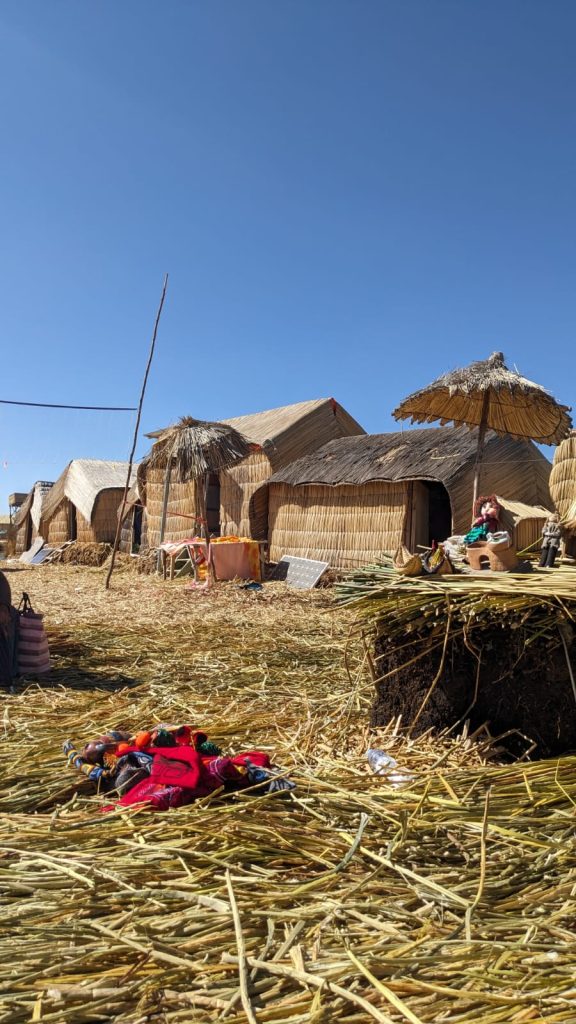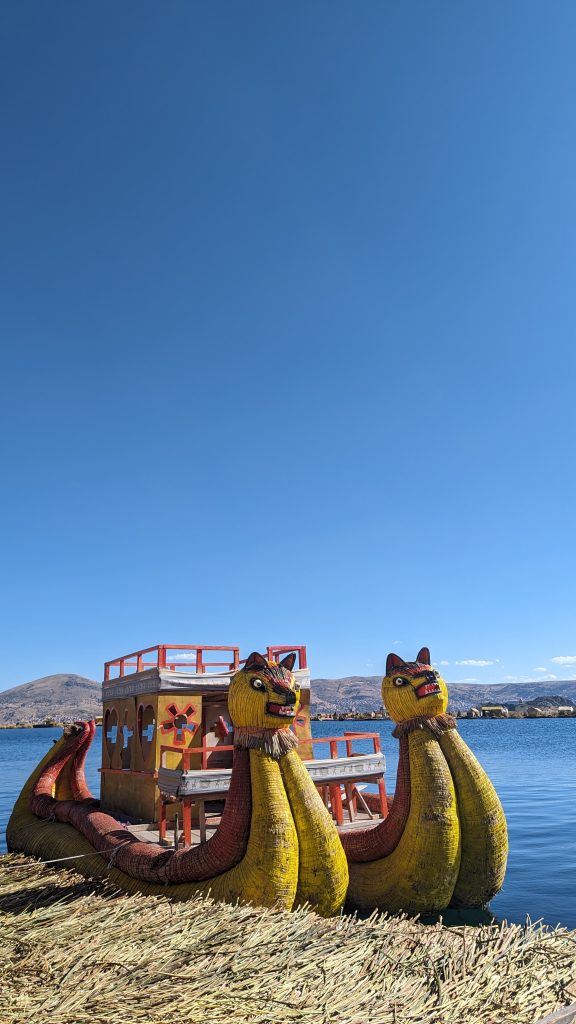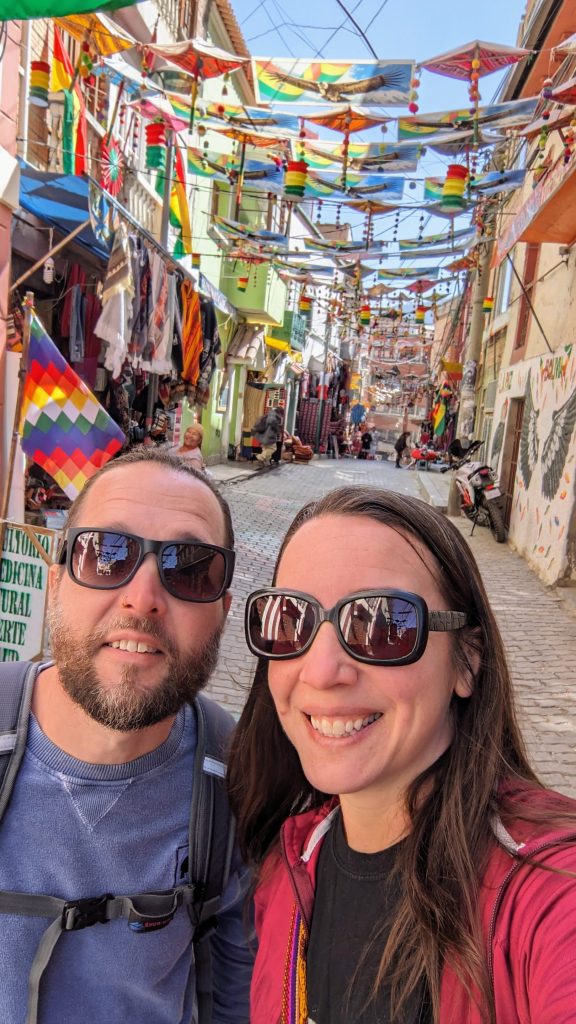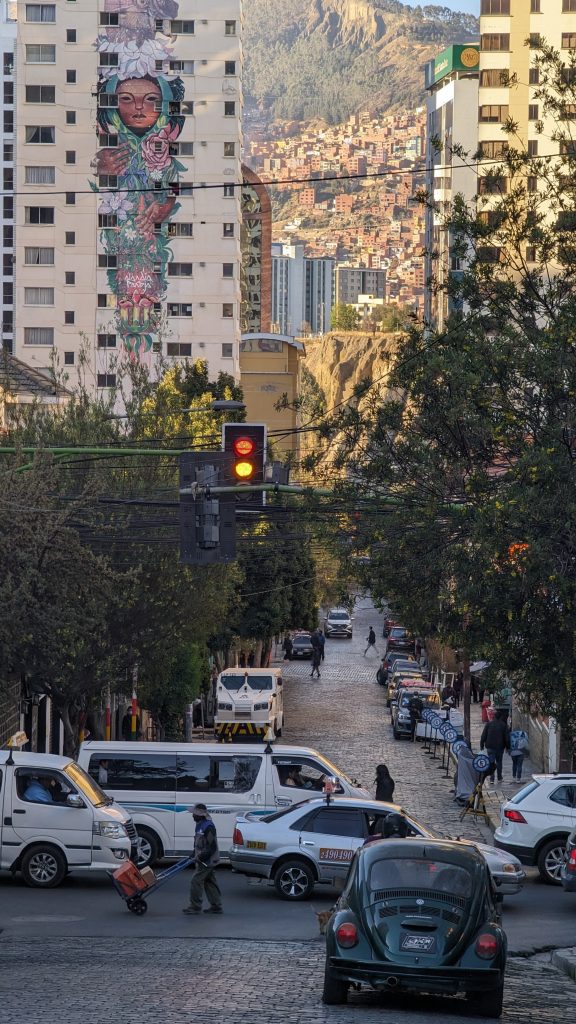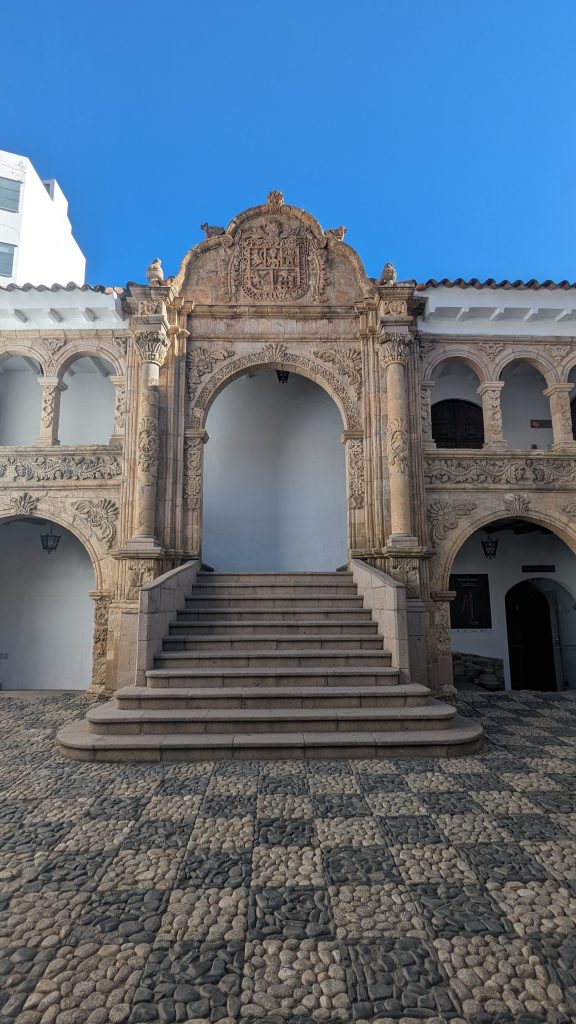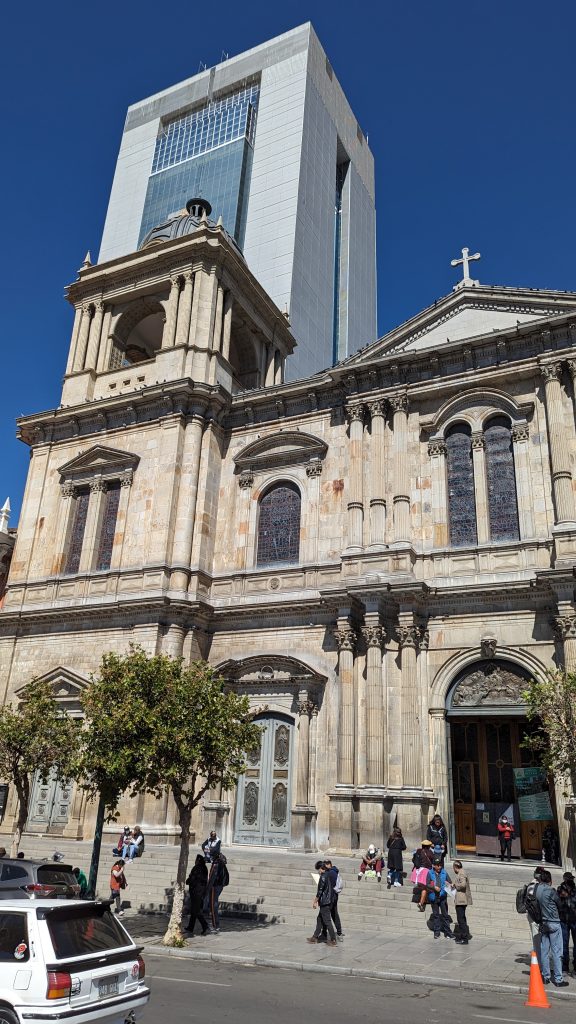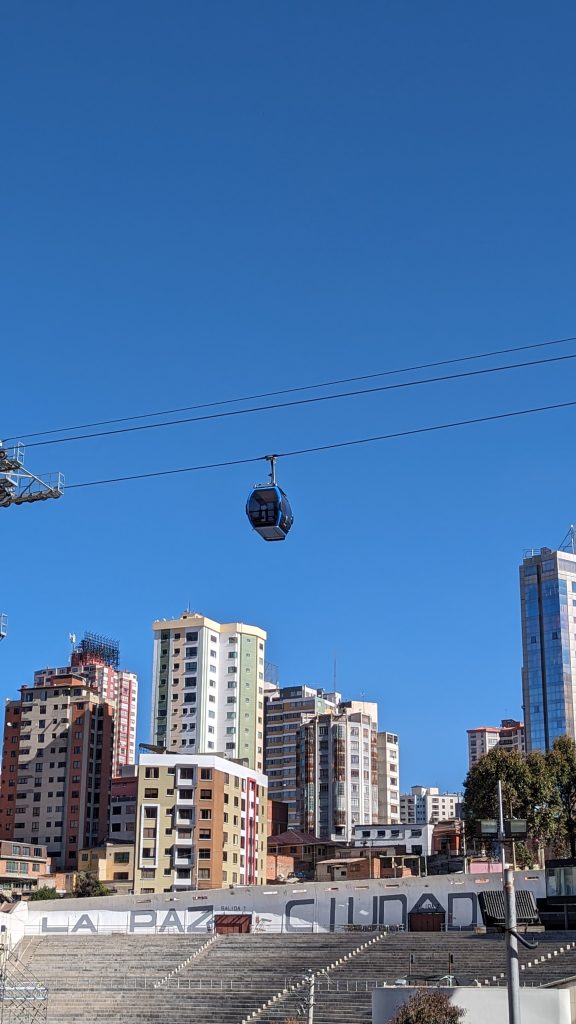When we left Cusco, we took an overnight bus to Puno, a little town on Lake Titicaca. I hardly slept that night, because Peruvian streets have a lot of speed bumps and the driver did not reduce his speed much while driving over them. Luckily we had a hotel room waiting for us in Puno to recover some of the hours of sleep we missed in the night.
In Puno, we took a trip to the floating Islands of the Uros. The Uros people started to live on these self-made floating Islands in order to escape the reach of the invading Incas some 500 years ago. Their source of livelihood is fishing but has gradually shifted to tourism. The life on the islands we visited felt kind of staged to me, catering to tourists. It was nevertheless interesting to step on these self-made floating islands and see what this completely different way of living would have been like in the past.
The town of Puno does not figure among the most beautiful ones I have visited, and if it weren’t for the unique floating islands, I wouldn’t recommend stopping here. For us, it was a convenient way to break up our long journey to La Paz. We continued our journey by bus the next day and made a few hours’ stop in the town Copacabana on the Bolivian side of Lake Titicaca. Copacabana didn’t impress me either, apart from the Basilica. The blue color of Lake Titicaca, on the other hand, was a feast to look at and I enjoyed our onward ride through the steppe-like Bolivian landscape with beautiful views of the lake a lot.
Having lived 6 weeks in Cuenca at about 2500 m / 8200 ft, the month in Lima on sea level felt so refreshingly easy and I ran my fastest time in a long time too. After 3 weeks in Cusco at about 3400 m / 11150 ft altitude, I have to admit that I was kind of over the high altitude. My nose was either completely dry or running. I frequently got a bit short of breath, and as a runner, it’s frustrating if your pace gets so slow and every run needs so much more effort. I ran just once in Cusco and it was killing me. I, therefore, had mixed feelings about our onward journey to La Paz, which is even higher in elevation (3640 m / 11940 ft).
Still, I’m very glad that we made this journey, and in the end, I would have liked to have had more than 4 full days to explore La Paz. The city feels so different from any place I have visited before. La Paz has 10 cable car lines in operation and we took several of them just for the fun of it. It’s such a nice mode of transportation, floating quietly and quickly high above the houses of the city. I think it truly transformed the lives of the people who would get stuck in traffic jams before and I wonder if other cities around the world would profit similarly from public transportation like this. Since an Austrian company built all the lines, I am not sure if they adhered to the Bolivian beliefs and made their offerings to the Andean gods. We learned that Bolivians are very superstitious and for every house which is built, at least one llama fetus is offered to Pachamama (Mother Earth). In El Alto, the city adjoining La Paz on the plateau above it, we saw many fireplaces for that purpose. Our guide also pointed out a small hut of a black magic witch doctor there. The architecture in El Alto, and in particular the neo-Andean style there, is very different from La Paz, but even within the city of La Paz, you find different architectural styles, from colonial Spanish to modern highrises. We stayed on the 18th floor of an apartment building in Sopocachi, the highest floor I have lived on, in the highest capital of the world! La Paz definitely looks a bit rough around the edges. You constantly have to look at the sidewalk because there are so many holes or cobblestones which are different levels in height. The Parque Urbano Central, was unfortunately, apart from some sports facilities, closed and you didn’t get the feeling it would re-open any time soon. There is no Uber in La Paz and for our ride to the airport, we used the “Yango” App. We had a good dinner and cocktail in the Carrot Tree. If you like Pisco Sours, try the Passion Sour there which is made with the traditional Bolivian brandy Singani. For breakfast, I can recommend the super cute Cafe Typica, which also houses a record store and an open fireplace. La Paz can get really cold and our gas heating in the bedroom was not sufficient to heat the small apartment. Our only gas heating in Cusco, in the living room, could have been better too and we are therefore very happy that our next destination will be a warm one that doesn’t require 3 blankets on the bed. I am ready for lower altitudes and more comfort too.

